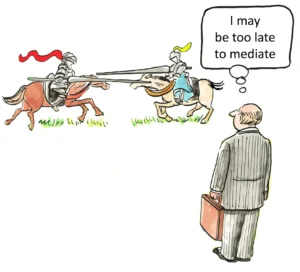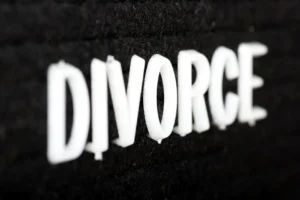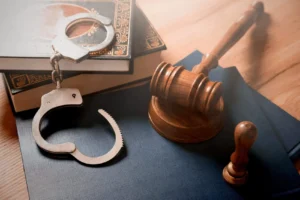Criminal Conspiracy: Understanding Group Crime Liability
In the complex world of criminal law, criminal conspiracy stands out as a unique and often misunderstood concept. At its core, a criminal conspiracy involves an agreement between two or more individuals to commit an unlawful act. This agreement forms the foundation of the offense, making it possible for individuals to be held accountable for their involvement in planned criminal activities, even if those activities never come to fruition. The concept of criminal conspiracy plays a crucial role in the justice system’s efforts to combat organized crime, terrorism, and other forms of group criminal behavior.
The legal implications of criminal conspiracy extend far beyond the act of planning a crime. They encompass a wide range of considerations, from the intent of the conspirators to the actions taken in furtherance of the conspiracy. Understanding these nuances is essential for both legal professionals and the general public, as the consequences of being involved in a criminal conspiracy can be severe and far-reaching.
One of the key aspects of criminal conspiracy is the element of agreement. Unlike many other crimes, conspiracy does not require the completion of the intended criminal act. The mere act of agreeing to commit a crime is sufficient to establish culpability. This unique feature of conspiracy law allows law enforcement and prosecutors to intervene before a crime is committed, potentially preventing harm and holding individuals accountable for their intentions to break the law.
The scope of criminal conspiracy is vast, encompassing a wide range of illegal activities. From drug trafficking operations to complex financial fraud schemes, conspiracies can take many forms. In recent years, the rise of cybercrime has introduced new dimensions to conspiracy law, as individuals can now conspire to commit crimes across vast distances and international borders, presenting new challenges for law enforcement and legal systems worldwide.
One of the most significant aspects of criminal conspiracy is its ability to cast a wide net of liability. Under conspiracy law, each member of the conspiracy can be held responsible for the actions of their co-conspirators, even if they were not directly involved in every aspect of the crime. This principle, known as Pinkerton liability, has been a powerful tool for prosecutors in cases involving organized crime and other complex criminal enterprises.
The concept of overt acts plays a crucial role in many conspiracy cases. While the agreement to commit a crime forms the basis of the conspiracy, many jurisdictions require that at least one conspirator take some action in furtherance of the conspiracy for it to be considered a criminal offense. These overt acts need not be illegal in themselves but must demonstrate the conspirators’ intent to carry out their criminal plan. This requirement serves as a safeguard against prosecuting individuals for mere thoughts or casual conversations about illegal activities.
In the realm of white-collar crime, conspiracy charges are often used to address complex schemes involving multiple participants. Corporate fraud, insider trading, and money laundering operations frequently involve intricate networks of individuals working together to achieve illegal goals. Conspiracy charges allow prosecutors to target not just the primary actors but also those who facilitated or enabled the criminal activity, even if they did not directly profit from it.
The global nature of modern crime has led to increased attention on international criminal conspiracies. Transnational organized crime groups often operate across multiple countries, engaging in activities such as human trafficking, arms smuggling, and large-scale drug operations. Addressing these conspiracies requires cooperation between law enforcement agencies and legal systems of different nations, adding layers of complexity to investigation and prosecution efforts.
One of the most challenging aspects of prosecuting criminal conspiracies is proving the existence of an agreement. Unlike many other crimes, where physical evidence or eyewitness testimony can clearly establish the commission of an offense, conspiracies often rely on more circumstantial evidence. Prosecutors may need to piece together a pattern of communications, financial transactions, and other behaviors to demonstrate that individuals were working in concert toward a criminal goal.
The role of technology in modern conspiracies cannot be overstated. Encrypted communication platforms, cryptocurrency transactions, and the dark web have provided new tools for criminals to plan and coordinate their activities while evading detection. This technological evolution has forced law enforcement and legal professionals to adapt their strategies and develop new methods for uncovering and prosecuting conspiracies in the digital age.
Defending against conspiracy charges presents unique challenges for criminal defense attorneys. The broad nature of conspiracy law and the potential for guilt by association require careful strategies to protect clients’ rights. Defense tactics may include challenging the existence of an agreement, arguing that a client withdrew from the conspiracy before any overt acts were committed, or demonstrating that the client lacked the necessary intent to participate in the criminal plan.
The concept of withdrawal from a conspiracy is an important legal principle that can significantly impact the outcome of a case. If an individual can demonstrate that they took clear and decisive steps to remove themselves from the conspiracy before the commission of the intended crime, they may be able to avoid liability. However, the burden of proving withdrawal typically falls on the defendant, and courts have set high standards for what constitutes an effective withdrawal.
In recent years, there has been growing debate about the scope and application of conspiracy laws. Critics argue that broad conspiracy statutes can lead to overcharging and potentially unjust convictions, particularly in cases where individuals had minimal involvement in the alleged criminal activity. This has led to calls for reform in some jurisdictions, aiming to strike a balance between effective law enforcement and protecting individual rights.
The intersection of conspiracy law and First Amendment rights has been a subject of significant legal discourse. Cases involving alleged conspiracies to engage in political protests or other forms of protected speech have raised questions about the limits of conspiracy prosecution and the potential for infringement on constitutional freedoms. Courts have grappled with drawing the line between legitimate political organizing and criminal conspiracy, particularly in cases involving allegations of domestic terrorism or extremist activities.
The use of informants and undercover operations in conspiracy investigations has been both a powerful tool for law enforcement and a source of controversy. While these tactics can be effective in uncovering and disrupting criminal networks, they also raise ethical and legal questions about entrapment and the reliability of evidence obtained through such means. Courts have established guidelines for the use of these investigative techniques, but their application in conspiracy cases continues to be a subject of debate.
The concept of co-conspirator statements as an exception to hearsay rules has significant implications for conspiracy trials. Under this principle, statements made by one conspirator in furtherance of the conspiracy can be admitted as evidence against all co-conspirators, even if they were not present when the statement was made. This exception can be a powerful tool for prosecutors but also raises concerns about fairness and the right to confront witnesses.
In the context of terrorism cases, conspiracy charges have become a central tool in law enforcement’s efforts to prevent attacks before they occur. The ability to prosecute individuals for agreeing to engage in terrorist activities, even if no attack has been carried out, has been crucial in disrupting potential threats. However, this approach has also faced criticism from civil liberties advocates who argue that it can lead to prosecutions based on thought crimes rather than actual harmful actions.
The role of plea bargaining in conspiracy cases adds another layer of complexity to the legal landscape. Prosecutors may offer reduced charges or sentences to lower-level conspirators in exchange for testimony against key figures in the criminal enterprise. While this practice can be effective in dismantling large-scale conspiracies, it also raises questions about the reliability of testimony given under such circumstances and the potential for injustice if innocent individuals feel pressured to plead guilty to avoid harsh sentences.
The concept of vicarious liability in conspiracy law means that each member of a conspiracy can be held responsible for the reasonably foreseeable crimes committed by their co-conspirators in furtherance of the conspiracy. This principle can lead to situations where individuals face charges for crimes they did not personally commit or even know about. While this aspect of conspiracy law is designed to address the collective nature of conspiratorial crimes, it has been criticized for potentially overextending criminal liability.
In the corporate world, the application of conspiracy law to business practices has significant implications. Antitrust violations, such as price-fixing agreements between competitors, are often prosecuted as criminal conspiracies. This intersection of criminal and corporate law highlights the broad reach of conspiracy statutes and their potential impact on business operations and executive liability.
The global nature of many modern conspiracies has led to increased focus on extradition processes and international legal cooperation. Conspiracies that span multiple countries can create jurisdictional challenges, requiring coordination between different legal systems and law enforcement agencies. The complexities of international law and varying legal standards across countries can significantly impact the investigation and prosecution of transnational conspiracies.
The use of RICO (Racketeer Influenced and Corrupt Organizations Act) statutes in conjunction with conspiracy charges has been a powerful tool in combating organized crime. RICO allows prosecutors to target the leaders of criminal enterprises, even if they have insulated themselves from direct involvement in specific crimes. The interplay between RICO and conspiracy law has had a significant impact on the prosecution of complex criminal organizations.
The concept of chain conspiracies versus wheel conspiracies is an important distinction in conspiracy law. Chain conspiracies involve a linear structure where each conspirator is linked to the next in a chain of criminal activity. Wheel conspiracies, on the other hand, involve a central figure (the hub) connected to multiple conspirators (the spokes) who may not be directly connected to each other. Understanding these structures is crucial for both prosecutors in building their cases and defense attorneys in challenging the alleged scope of a conspiracy.
The role of intent in conspiracy cases is a critical element that often becomes a central point of contention. Prosecutors must prove that each defendant had the specific intent to agree to commit the underlying offense. This can be particularly challenging in cases involving complex or technical crimes, where defendants may argue that they lacked the necessary understanding or intent to participate in the alleged conspiracy.
The impact of conspiracy convictions on sentencing is another important consideration. In many jurisdictions, conspiracy charges can carry penalties equal to or greater than those for the underlying offense. This can lead to situations where individuals face severe sentences for their involvement in planning a crime, even if the crime itself was never carried out. The potential for harsh sentencing in conspiracy cases has been a subject of ongoing debate in criminal justice reform discussions.
The use of electronic surveillance in investigating conspiracies has become increasingly prevalent and sophisticated. While these tools can be highly effective in uncovering criminal networks, they also raise significant privacy concerns and legal questions about the scope of permissible surveillance. Courts continue to grapple with balancing law enforcement needs against Fourth Amendment protections in the digital age.
The concept of merger in conspiracy law is an important legal principle that can affect how cases are charged and prosecuted. In some jurisdictions, when a conspiracy is successful and the intended crime is committed, the conspiracy charge may merge with the substantive offense. Understanding when and how merger applies can be crucial for both prosecutors in structuring their cases and defense attorneys in challenging multiple charges.
The role of social media and online platforms in modern conspiracies has introduced new challenges for law enforcement and legal professionals. These platforms can serve as tools for coordinating criminal activities but also as sources of evidence. The use of social media evidence in conspiracy trials raises questions about privacy, authentication, and the interpretation of online communications in a legal context.
In conclusion, criminal conspiracy remains a complex and evolving area of law with far-reaching implications for the criminal justice system. As technology advances and criminal enterprises become increasingly sophisticated, the legal framework surrounding conspiracy will continue to adapt. Understanding the nuances of conspiracy law is crucial for legal professionals, law enforcement, and individuals alike, as it plays a vital role in addressing organized crime, terrorism, and other forms of collective criminal behavior. The ongoing debates surrounding the scope and application of conspiracy laws reflect the challenge of balancing effective law enforcement with the protection of individual rights in a rapidly changing world.
Website Citations:
- https://www.justice.gov/archives/jm/criminal-resource-manual-923-18-usc-371-conspiracy-defraud-us
- https://www.law.cornell.edu/wex/conspiracy
- https://www.fbi.gov/investigate/organized-crime
- https://www.uscourts.gov/statistics-reports/federal-judicial-caseload-statistics-2023
- https://www.americanbar.org/groups/criminal_justice/publications/criminal_justice_section_archive/crimjust_standards_guiltypleas_blk/
Citations:
https://www.robertfoleylaw.com/blog/2023/10/types-of-criminal-conspiracies-and-how-the-fed-handles-them/
https://www.mololamken.com/knowledge-Whats-a-Criminal-Conspiracy
https://www.cnn.com/interactive/2023/07/politics/trump-indictments-criminal-cases/
https://www.rahmanravelli.co.uk/expertise/serious-general-and-complex-crime/articles/criminal-conspiracy-offences-explained/
https://www.webrageous.com/top-10-criminal-defense-attorney-keywords-for-ppc-advertising.htm
https://www.trlfirm.com/blog/2024/01/legal-implications-of-criminal-conspiracies/
https://en.wikipedia.org/wiki/Criminal_conspiracy
https://www.britannica.com/topic/criminal-law/Conspiracy


















